WE’RE NUTS FOR NUDIES!
Posted April 6, 2020
There are over 3,000 nudibranch species in the world and new ones are identified every day. They are also unattractively named sea slugs and come in a fantastic array of shapes and neon-bright colors that they themselves cannot see.
Did you know that there are 117 species of nudibranchs in the Sea of Cortez? Here are just a few of these beauties:
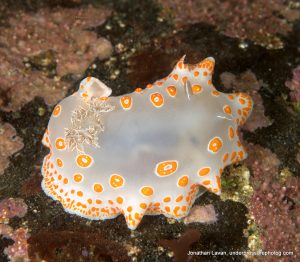
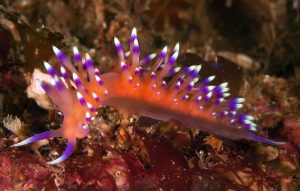
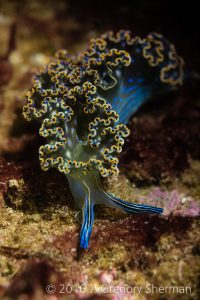
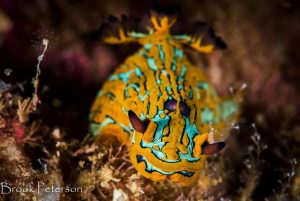
The name nudibranch comes from the Latin word nudas (naked) and the Greek work brankhia (gills) in reference to the gills or gill-like appendages which protrude from the backs of many nudibranchs.
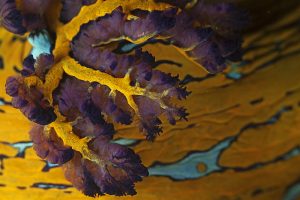
They are carnivores and range in size from microscopic to some as large as 1.5′ long, live on or near the seafloor and have been identified at depths between 30 and 6,500′ below the ocean’s surface.
Most nudibranchs eat using a radula, a toothed structure that they use to scrape off prey from the rocks they cling to; some suck out the prey after predigesting its tissue with selected enzymes, rather like a wasp. They are carnivorous, so that prey includes sponges, coral, anemones, hydroids, barnacles, fish eggs, sea slugs, and other nudibranchs. Nudibranchs are picky eaters—individual species or families of nudibranchs may eat only one kind of prey. Nudibranchs get their bright colors from the food they eat. These colors may be used for camouflage or to warn predators of the poison that lies within.
The Spanish shawl nudibranch (Flabellina iodinea) feeds on a species of hydroid called Eudendrium ramosum, which possesses a pigment called astaxanthin that gives the nudibranch its brilliant purple, orange, and red coloration.
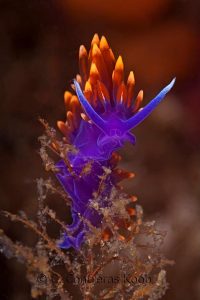
Nudibranchs are hermaphrodites, meaning that they have reproductive organs of both sexes. This is very helpful as since they cannot move far or fast, they can mate with any adult that happens to pass by.
Nudibranchs lay masses of spiral-shaped or coiled eggs, which are for the most part left on their own. The eggs hatch into free-swimming larvae which eventually settle onto the ocean bottom as adults.
These beautiful little creatures don’t live long – some up to a year but many only a few weeks. More is being learned about them every day.

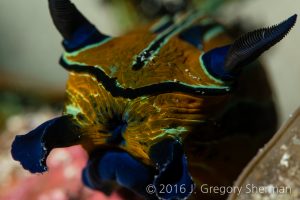
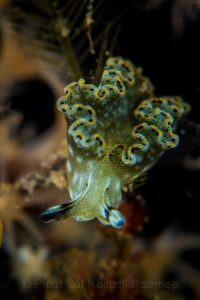
Want to see these amazing little critters for yourself? We see them almost every dive in the Midriff Islands of the Sea of Cortez but you need a liveaboard to get there. These are one-week trips offering 6 full days of diving aboard the Rocio del Mar and Quino el Guardian Liveaboards.

